

Food Group Express — Newsletter for Second Grade Curriculum Lesson 4: Fruits (Bundle of 25)
Reviewed $12
Editor's note
The following abstract describes a publication that is available for purchase or as a downloadable PDF.
If reprinting or copying, please complete the permissions form that can be found on the reprint and copy guidelines page. If sharing or posting, please link directly to this page.

Exploring the Food Groups — Newsletter for Fifth Grade Curriculum Lesson 2: Food Safety (Bundle of 25)
Reviewed $12
Editor's note
The following abstract describes a publication that is available for purchase or as a downloadable PDF.
If reprinting or copying, please complete the permissions form that can be found on the reprint and copy guidelines page. If sharing or posting, please link directly to this page.
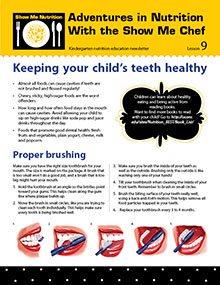
Adventures in Nutrition With the Show Me Chef — Newsletter for Kindergarten Curriculum Lesson 9: Brushing and Flossing (Bundle of 25)
Reviewed $12
Editor's note
The following abstract describes a publication that is available for purchase or as a downloadable PDF.
If reprinting or copying, please complete the permissions form that can be found on the reprint and copy guidelines page. If sharing or posting, please link directly to this page.

Food Group Express — Newsletter for Second Grade Curriculum Lesson 7: MyPlate (Bundle of 25)
Reviewed $12
Editor's note
The following abstract describes a publication that is available for purchase or as a downloadable PDF.
If reprinting or copying, please complete the permissions form that can be found on the reprint and copy guidelines page. If sharing or posting, please link directly to this page.

Adventures in Nutrition With the Show Me Chef — Newsletter for Kindergarten Curriculum Lesson 4: Vegetables (Bundle of 25)
Reviewed $12
Editor's note
The following abstract describes a publication that is available for purchase or as a downloadable PDF.
If reprinting or copying, please complete the permissions form that can be found on the reprint and copy guidelines page. If sharing or posting, please link directly to this page.

Exploring the Food Groups — Newsletter for Fifth Grade Curriculum Lesson 5: Vegetables (Bundle of 25)
Reviewed $12
Editor's note
The following abstract describes a publication that is available for purchase or as a downloadable PDF.
If reprinting or copying, please complete the permissions form that can be found on the reprint and copy guidelines page. If sharing or posting, please link directly to this page.

Exploring the Food Groups — Newsletter for Fifth Grade Curriculum Lesson 8: Protein (Bundle of 25)
Reviewed $12
Editor's note
The following abstract describes a publication that is available for purchase or as a downloadable PDF.
If reprinting or copying, please complete the permissions form that can be found on the reprint and copy guidelines page. If sharing or posting, please link directly to this page.

Fun With Food and Fitness — Newsletter for First Grade Curriculum Lesson 2: Food Groups Primer (Bundle of 25)
Reviewed $12
Editor's note
The following abstract describes a publication that is available for purchase or as a downloadable PDF.
If reprinting or copying, please complete the permissions form that can be found on the reprint and copy guidelines page. If sharing or posting, please link directly to this page.

Adventures in Nutrition With the Show Me Chef — Newsletter for Kindergarten Curriculum Lesson 2 (Bundle of 25)
Reviewed $12
Editor’s note
The following abstract describes a publication that is available for purchase or as a downloadable PDF.
If reprinting or copying, please complete the permissions form that can be found on the reprint and copy guidelines page. If sharing or posting, please link directly to this page.

Let's Read About Healthy Eating — Newsletter for Pre-kindergarten Curriculum Lesson 4: Choosing Fruits and Vegetables (Bundle of 25)
Reviewed $12
Editor's note
The following abstract describes a publication that is available for purchase or as a downloadable PDF.
If reprinting or copying, please complete the permissions form that can be found on the reprint and copy guidelines page. If sharing or posting, please link directly to this page.

Fun With Food and Fitness — Newsletter for First Grade Curriculum Lesson 4: Vegetables (Bundle of 25)
Reviewed $12
Editor's note
The following abstract describes a publication that is available for purchase or as a downloadable PDF.
If reprinting or copying, please complete the permissions form that can be found on the reprint and copy guidelines page. If sharing or posting, please link directly to this page.

Let's Read About Healthy Eating — Newsletter for Pre-kindergarten Curriculum Lesson 6: Protein (Bundle of 25)
Reviewed $12
Editor's note
The following abstract describes a publication that is available for purchase or as a downloadable PDF.
If reprinting or copying, please complete the permissions form that can be found on the reprint and copy guidelines page. If sharing or posting, please link directly to this page.

Building MyBody — Newsletter for Third Grade Curriculum Lesson 2: Carbohydrates (Bundle of 25)
Reviewed $12
Editor's note
The following abstract describes a publication that is available for purchase or as a downloadable PDF.
If reprinting or copying, please complete the permissions form that can be found on the reprint and copy guidelines page. If sharing or posting, please link directly to this page.
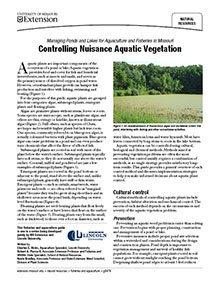
Managing Ponds and Lakes for Aquaculture and Fisheries in Missouri: Controlling Nuisance Aquatic Vegetation
Reviewed
Learn to identify and control nuisance aquatic vegetation in Missouri ponds and lakes, ensuring optimal conditions for aquaculture and fisheries.
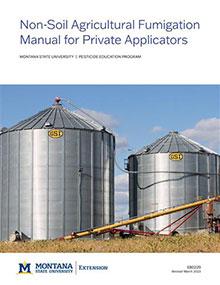
Non-soil Agricultural Fumigation Manual for Private Applicators
Revised $11
This manual covers the basic information about fumigating grain bins to protect stored feed and grains.

Eating From the Garden: Gardening for Kids Promo (Bundle of 25)
New $10
This flier is for promoting the Eating From the Garden program.
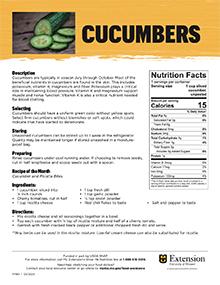
Promoting Produce: Cucumbers Handout (Bundle of 25)
New $10
This handout provides information regarding cucumbers in your diet.

Promoting Produce - Watermelon Handout (Bundle of 25)
New $10
This handout provides information regarding watermelon in your diet.
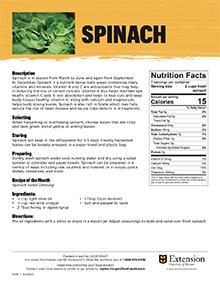
Promoting Produce: Spinach Handout (Bundle of 25)
New $10
This handout provides information regarding spinach in your diet.

Preserve It Fresh, Preserve It Safe: 2023, No. 2 (March/April)
New
Learn about canning options for preserving food safely, from boiling water bath canners to pressure canners, and tips for homemade fruit roll-ups.
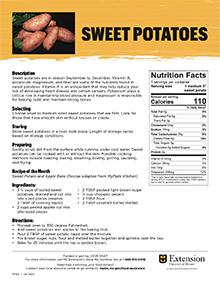
Promoting Produce: Sweet Potatoes Handout (Bundle of 25)
New $10
This handout provides information regarding sweet potatoes in your diet.
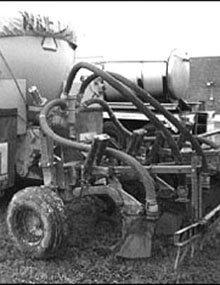
Equipment for Off-site Application of Biosolids
Reviewed
Provides guidance on equipment used for off-site land application of biosolids, focusing on logistics, equipment types, and operational considerations.
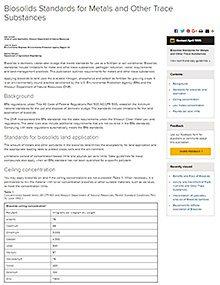
Biosolids Standards for Metals and Other Trace Substances
Reviewed
Biosolids contain nutrients beneficial for crops but must meet strict limits on metals and trace substances to ensure safe land application.
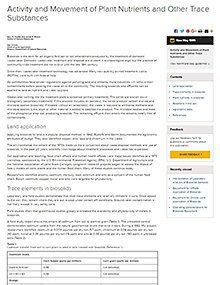
Activity and Movement of Plant Nutrients and Other Trace Substances
Reviewed
Biosolids are a product of the municipal wastewater treatment process. Typically, biosolids contain minerals and organic matter that can be beneficial to agricultural land.

Equipment for On-site Land Application of Biosolids
Reviewed
This publication discusses equipment used for on-site land application of biosolids, including pumps, pipelines, and applicators.